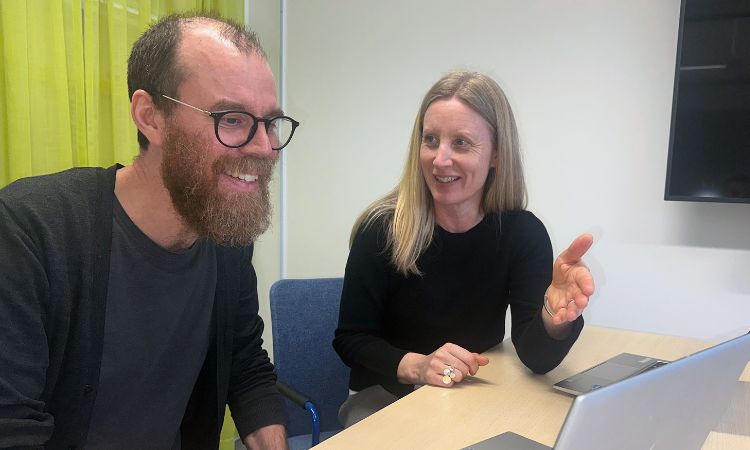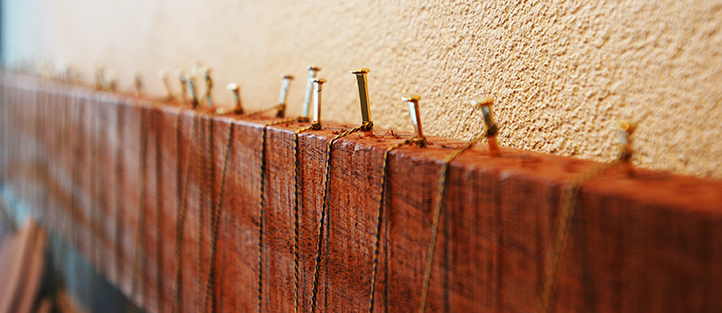Theses in KI Open Archive
KI Open Archive is KI's institutional repository where you will find theses written at Karolinska Institutet as well as openly published manuscripts and articles.
Are you about to e-nail your thesis? You will find information about the process on this page.
KI Open Archive
KI Open Archive is KI’s institutional repository for dissertations, theses and self-archived articles published at Karolinska Institutet.
Access
Freely available.
E-nailing your thesis
When your thesis application has been approved, an email with an ISBN and DOI will be sent to your @ki.se address. Copy these into the designated places in the thesis template.
Once you have received a positive decision on the preliminary review of your constituent papers and you have approved the sample print of your thesis from the printing company, the printing company will deliver the comprehensive summary (the kappa) to KIB and the library will e-nail the thesis in KI Open Archive.
Once the e-nailing is done, you will receive an email from publications@ki.se which contains a confirmation and a unique DOI link to your thesis in KI Open Archive. You can also find the link in KI Open Archive by clicking on the ‘Cite’ button and then ‘Copy Link’. This link is permanent and should be used for all distribution of your thesis.
iThenticate
To ensure that no plagiarism occurs in doctoral theses, KI runs systematic plagiarism checks of all theses. Once a thesis has been e-nailed in KI Open Archive, it is checked in the text-matching detection software iThenticate.
Instructions on how to use iThenticate and how you should interpret the result can be found on the Staff portal on the page Plagiarism checks in doctoral education.
Copyright for constituent papers
The articles that you want to include in your thesis, the so called constituent papers, may have different copyright. You need to find out which copyright each paper has. Many articles are published with a CC BY license and if that is the case you do not need to ask the publisher for permission to reuse the article in your thesis. If the article doesn't have a CC BY license you have probably signed a "Copyright Transfer Agreement" (CTA) where you have relinquished all or parts of your copyright. In that case you need to ask the publisher for permission. You can usually do that though the journal's homepage. Further information about copyright.
Choosing a license for your comprehensive summary
You own, at all times and in all circumstances, the rights to the thesis' comprehensive summary (kappa) and you can use that material in any way as you like. You have the option to share your comprehensive summary with an open Creative Commons license. You choose license type in the thesis template. An open license facilitates the dissemination of your research results by clearly indicating to users how the material may be used without having to ask you as author and copyright holder for permission.
Which license should I choose?
According to KI's policy for open publication, you should, whenever possible, choose the most open licence, CC BY 4.0.
Anyone using or distributing your publication must acknowledge your authorship and any changes they’ve made, regardless of which Creative Commons license you have chosen.
If the content of the comprehensive summary is such that it is important for you as the author to retain control over who can use it for commercial purposes or make changes to it, you can choose one of the licenses containing the NC or ND condition.
You can refrain from choosing an open license for your comprehensive summary. In that case, choose the option with an empty row in the thesis template. This means that your comprehensive summary will be e-nailed and published freely available in KI Open Archive. Any other use requires your permission.
Here you will find information about the license types you can choose for your comprehensive summary. At Creative Commons you find the licenses in their entirety and more information about what it means to license your work with an open license. If you have questions about what the different licenses mean, you can contact the library.
The Creative Commons Attribution license is the most open license and means that you, as the author, allow others to use, distribute, remake, modify and build on your publication, even in commercial contexts.
It is the license that is most common in scientific publishing and that many Swedish and international research funders have as a requirement for publications.
The Creative Commons Attribution Non-Commercial license means that you allow others to use, distribute, adapt, modify and build on your publication, but not that the work is used in a commercial context. This may limit the possibility of, for example, spreading the publication on social platforms.
It is a license that can be useful in scientific publishing if you want to prevent free commercial use of your images and figures.
Creative Commons Attribution-No Derivatives means that you allow others to use and distribute your publication. If others rework, modify or build on your publication, it cannot be redistributed without your permission. This includes translations.
This is a license that is often not relevant for scientific publications but can be useful if you want to limit adaptations of your images and figures.
Creative Commons Attribution-Non Commercial-No Derivatives means that you allow others to use and distribute your publication, but not to use it for commercial purposes. If others rework, modify or build on your publication, it cannot be redistributed without your permission.
This is a license that is often not relevant for scientific publications, but can be useful if you want to restrict adaptations and free commercial use of your material.

Publication support
Contact us with questions regarding open access, KI's publishing agreements, bibliometrics, publishing in KI Open Archive and strategic publishing.
If you would like us to get back to you, please submit your contact information in the form below along with your feeback.

